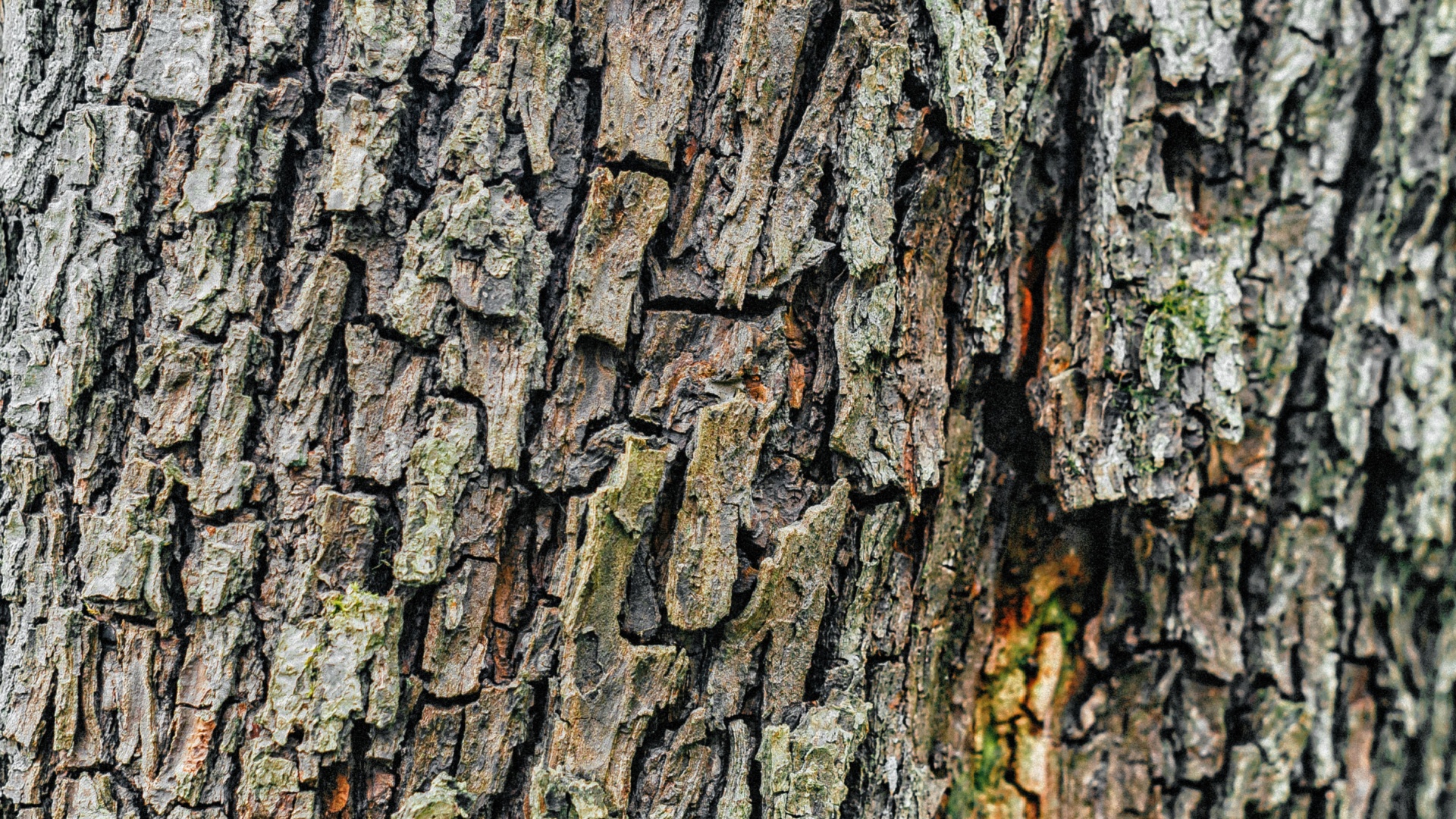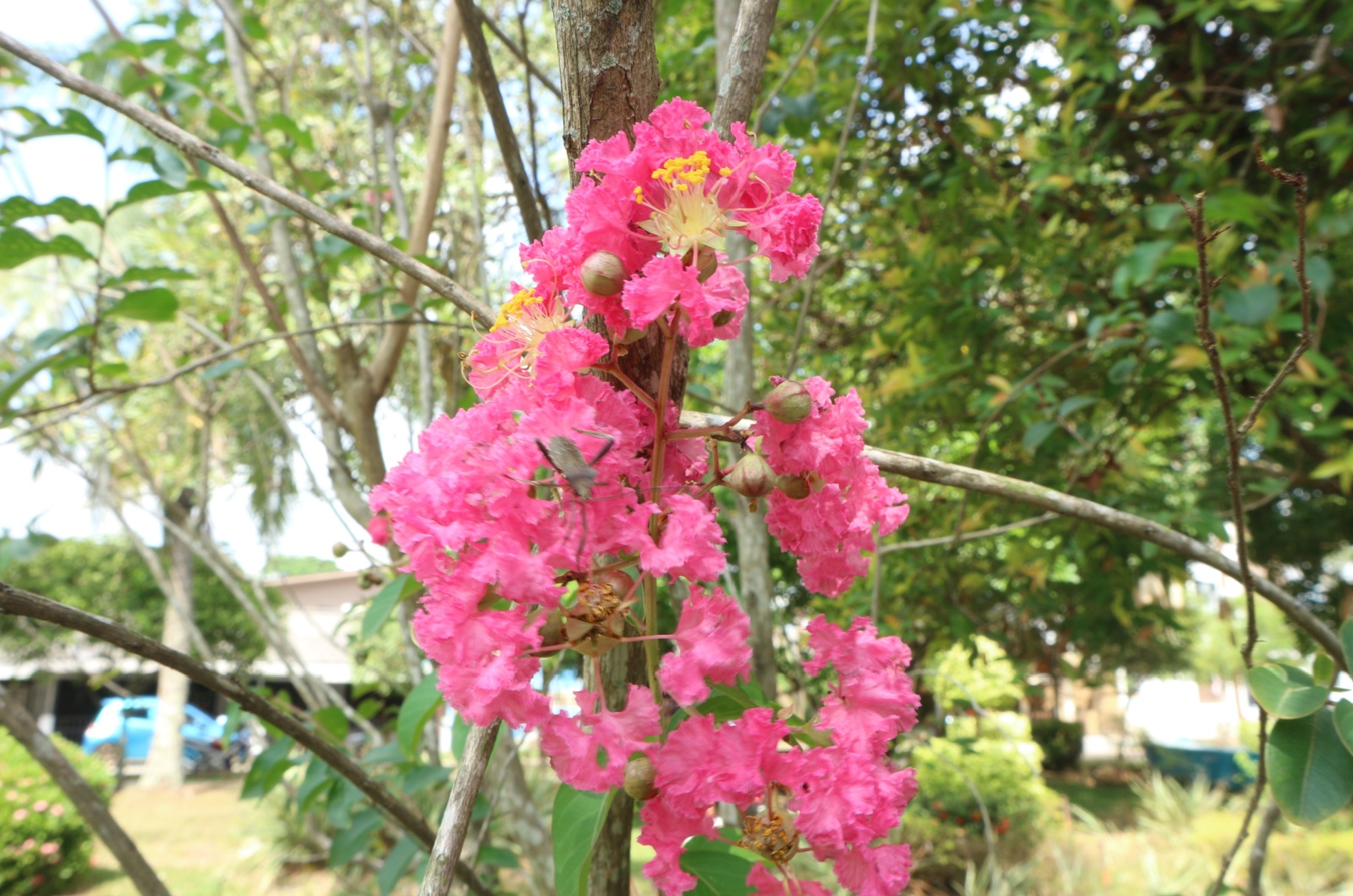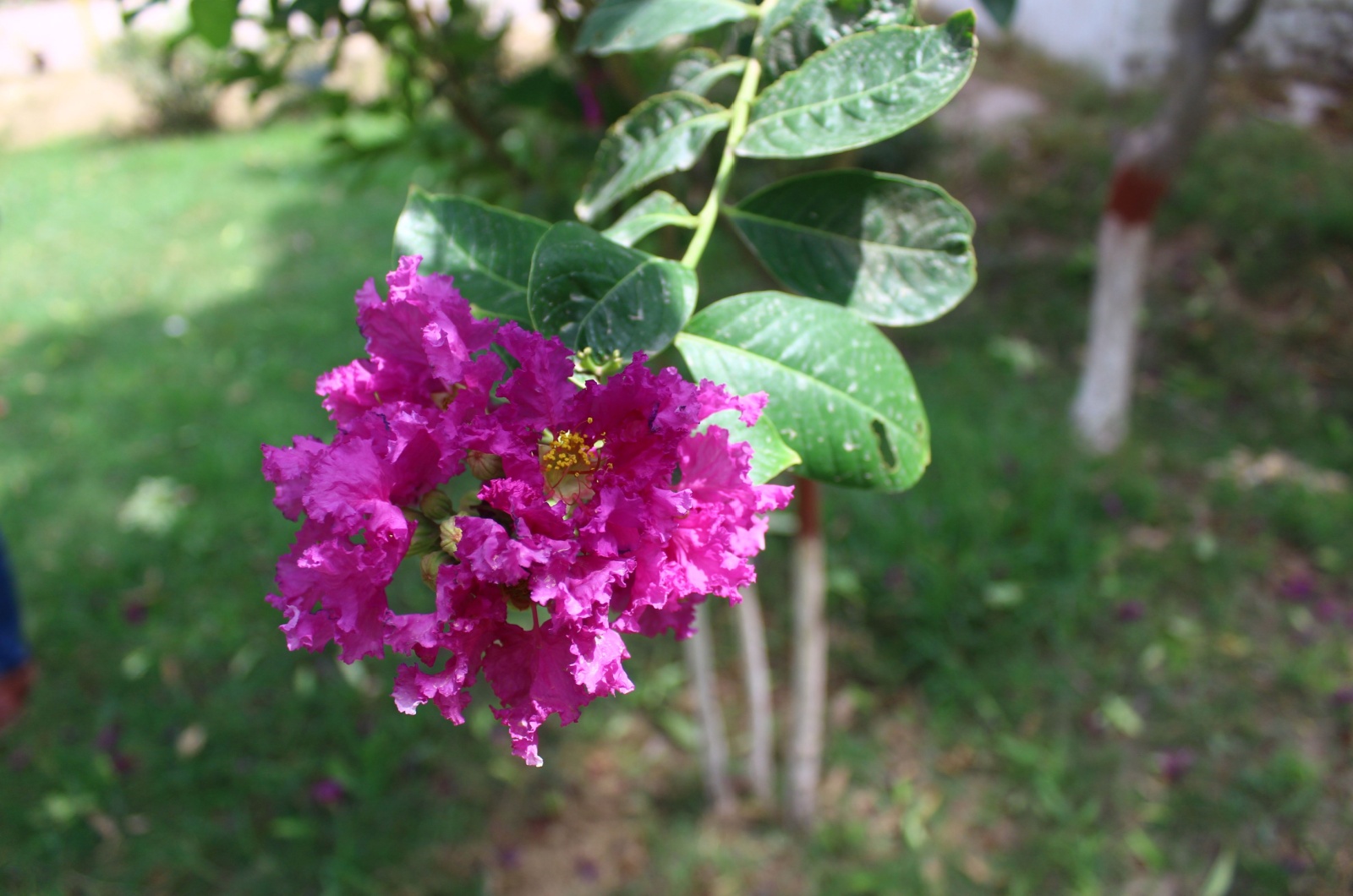Have you recently noticed white spots on your crepe myrtle and been wondering if it’s normal or that something unusual might be affecting your tree?
I’m sad to inform you that those white spots are probably bark scales. This insect has been spreading across the Southern U.S. and can turn your beautiful crepe myrtle into a sad sight if not managed properly.
Don’t start panicking immediately because, with some quick action and the right treatments, you can help your tree bounce back and keep it looking its best.
Here’s how to help your crepe myrtle get right back on track:
Learn To Identify Bark Scale
Crepe myrtle bark scale likes to hide on the bark, so it might actually be hard to spot.
At first glance, those tiny white spots on your crepe myrtle bark might look like harmless lichen or mold, but don’t be fooled. They’re actually ovisacs where female scales lay their eggs.
If you poke these spots with a toothpick and see pink goo or egg clusters, you’ve got yourself a scale invasion.
I know it’s a bit gross, but catching it early means you can save your crepe myrtle from getting completely ruined by these critters.
Taking this into consideration, it’s best to keep an eye out for those white spots and that sooty mold.
Related: 3 Pests That Attack Crepe Myrtles & How To Get Rid Of Them
And Try To Control It
I can’t stress this enough – it’s crucial to act early if you want to get rid of crepe myrtle bark scale effectively. Wondering why?
It’s because those white ovisacs can each contain 60 to 250 eggs that might overwinter and hatch next spring (and spread literally everywhere, yuck!).
If you are shopping for a new crepe myrtle, you should check the upper tips and twigs for any signs of scale to avoid bringing home a potential infestation.
Although research is still ongoing, the best defense against crepe myrtle bark scale right now is to apply soil insecticide once a year in early spring.
To make it more effective, scrub the branches and trunks with a soft brush and dish soap-water mix to remove scales and egg clusters (this mixture is always the best solution). Don’t forget to check where branches meet – scales love to hang out there.
Look out for other white, fuzzy pests, which might be Hyperaspis lady beetle larvae. These little guys have a spiky appearance and feast on the scale. However, they’re not numerous enough yet to control infestations on their own.
Still, these tiny beetle larvae might be a promising ally in the fight against this nasty insect.
Try these methods and see if they work. If you start to lose hope, just keep in mind that you can always get a new crepe myrtle!
This might be helpful: Follow These 8 Easy Steps To Transplant Your Crepe Myrtle Like A Pro



